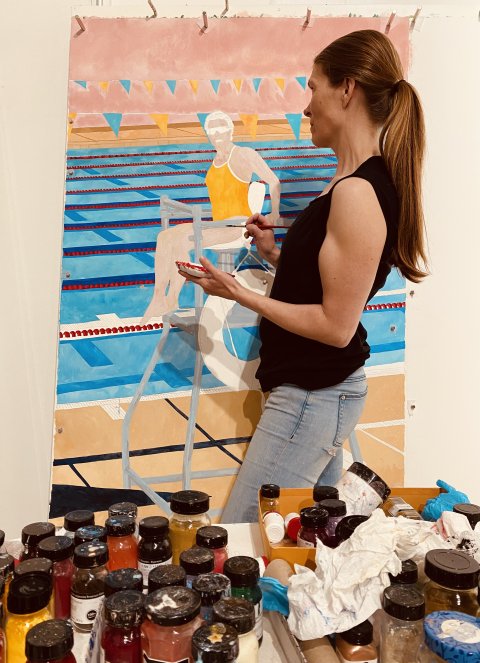My art's raison d'être
My art's raison d'être lies in the exquisite marriage of ancient technique and contemporary vision. Working with egg tempera—a medium that has graced masterpieces since medieval times—allows me to create luminous depths and subtle nuances that modern materials simply cannot replicate. This painstaking process, where pure pigments are bound with egg yolk, demands both precision and patience. The translucent layers of egg tempera build slowly, much like the layers of meaning within each work—creating surfaces that seem to glow from within, revealing new details with each viewing. My pieces invite collectors to explore this intersection of historical craftsmanship and contemporary expression. Each work represents countless hours of meticulous technique, resulting in paintings that possess both the timeless luminosity of Renaissance masterpieces and the intellectual depth of modern art.

What drives my devotion to egg tempera is its unforgiving nature and extraordinary rewards. Each layer dries within moments, demanding decisive brushwork and clear vision. The result? Paintings with an otherworldly depth and a matte finish that seems to capture light itself.


Art Runs in the Blood: The Munch Connection
My great-grandfather, Dr. Lucien Claudius Dedichen, wasn't just Edvard Munch's physician—he was his confidant and friend. This intimate connection to one of Norway's most celebrated artists runs deeper still: my other great-grandfather, Hans Blehr, married Tulla Larsen, Munch's former fiancée. These personal ties to Munch's world shaped my artistic journey long before I discovered my own path.

A Revolutionary Spirit: From Stage to Canvas
Agnes Mowinckel, my great-grandmother, shattered conventions as Norway's first female stage director and dared to bring Munch's paintings to the theater stage—an artistic fusion never before seen in Norwegian theatre. Her bold vision earned her a place not just in theatre history, but in the paintings of Norway's most celebrated artists: Munch, Krogh, Fjell, and Sørensen all captured her pioneering spirit on canvas.
Through family stories and these portraits, her legacy of artistic courage continues to inspire my own creative journey and desire to push boundaries.
Behind the Scenes at the Munch Museum
Fresh from university, I found myself handling artistic treasures at the Munch Museum, assisting the chief conservator in examining 17,300 prints for the catalog raisonné. Each print passed through my hands, revealing Munch's genius in layers of ink and paper. This intimate experience with a master's work shaped my understanding of art's power and preservation.

The Art of Print: My New York Journey
At Pace Editions in New York, I immersed myself in the mastery of printmaking alongside some of the world's finest printers. Every technique—from traditional etching to experimental methods—opened new artistic possibilities. This experience, complemented by time at legendary studios Gemini G.E.L., fundamentally shaped my artistic voice.

From Harvard to Art's Inner Circle
During my time at Harvard University (1999-2000), I had the extraordinary privilege of meeting Phil and Lynn Straus, then owners of the world's finest private collection of Munch's works. Their intimate knowledge of each piece and passionate approach to collecting offered me unprecedented insights into both Munch's artistry and the art of building a meaningful collection.

Inside Warhol's World
Through my friendship with Tim Hunt, the Warhol Foundation's exclusive agent for prints and photographs, I gained rare insights into Warhol's artistic universe. Most fascinating was discovering Warhol's "After Munch" silkscreens—where pop art met the master of expressionism. These encounters at the Foundation opened my eyes to new possibilities in artistic reinterpretation and the powerful dialogue between past and present.

Art Sets Sail: A World-First Exhibition
In 2002, I curated "Munch and Warhol after Munch" for The World—the largest private residential ship on Earth. As we set sail from London, residents experienced something unprecedented: Munch's originals and Warhol's reinterpretations traveling the globe together, creating a floating dialogue between expressionism and pop art on the high seas.




When Pop Art Met The Scream
In 2010, I brought together Warhol's and Munch's masterpieces at the Louisiana Museum of Modern Art in Copenhagen. Having built a significant private collection for a collector, I was able to provide all the Warhol works and most of the Munch pieces for "Warhol After Munch." This groundbreaking show displayed how Warhol reimagined iconic works like "The Scream" and "Madonna," exploring the intersection of expressionism and mass media.





























